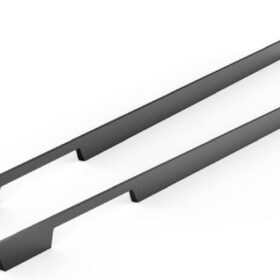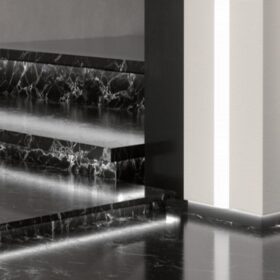How to Ensure Quality and Precision with Your Kitchen Counter Handles
In the realm of kitchen design, every detail matters, from the gleaming appliances to the elegant cabinetry. Amidst these visual elements, the humble kitchen counter handles play a crucial role in both form and function. While seemingly insignificant, they can elevate the aesthetic appeal of your kitchen and ensure seamless operation for years to come. To achieve the highest levels of quality and precision with your kitchen counter handles, consider the following fundamental principles:
Material Selection
The material of your kitchen counter handles will significantly impact their durability, longevity, and visual appeal.
Stainless Steel: Renowned for its resilience and corrosion resistance, stainless steel is an excellent choice for both classic and contemporary kitchens. It resists fingerprints and stains, making it a low-maintenance option.
Brass or Copper: These warm-toned metals add a touch of luxury and elegance to any kitchen. While they require more regular maintenance to prevent tarnish, their patina can add character over time.
Zinc or Pewter: Affordable and versatile, zinc and pewter offer a wide range of finishes to complement various kitchen styles. They can be polished to resemble chrome or brushed for a more rustic look.
Wood: Natural and warm, wood handles bring a touch of organic beauty to your kitchen. They are durable and can be stained or painted to match your cabinetry or accent pieces.
Design Considerations
The design of your kitchen counter handles should complement the overall aesthetic of your kitchen while ensuring functionality.
Shape: Choose shapes that fit comfortably in your hand and enhance the visual appeal of your kitchen. Common shapes include square, round, and D-shaped handles.
Size: The size of your handles should be proportional to the size of your cabinetry and the height of your counters. Larger handles may be more suitable for taller cabinets, while smaller handles may complement shorter ones.
Finish: The finish of your handles can either blend seamlessly with your kitchen or serve as a contrasting accent. Polished finishes reflect light and add a touch of sophistication, while brushed finishes are more subdued and less likely to show fingerprints.
Installation Techniques
Proper installation is essential for ensuring the quality and precision of your kitchen counter handles.
Precise Measurement: Measure the distance between the drill holes carefully to ensure even spacing and alignment. Use a level to ensure your handles are installed straight and evenly.
Secure Tightening: Tighten the screws securely using a screwdriver or drill. Avoid overtightening, as this can damage the handles or the cabinetry.
Use a Jig: For greater precision, use a drilling jig to guide your drill and ensure accurate hole placement. This tool helps prevent uneven or misaligned holes.
Maintenance and Care
Proper maintenance and care will extend the life of your kitchen counter handles and keep them looking their best.
Regular Cleaning: Wipe down your handles regularly with a damp cloth to remove dirt and grime. Avoid using harsh chemicals or abrasive cleaners, as these can damage the finish.
Lubrication: If your handles become stiff or difficult to operate, apply a small amount of lubricant to the moving parts. This will reduce friction and ensure smooth operation.
Tightening Screws: Over time, screws may loosen slightly. Regularly check and tighten any loose screws to prevent the handles from becoming loose or falling off.
-
2024-11-29Top Trends in Modern Kitchen Cabinet Pulls for 2024
-
2024-11-28The Ultimate Guide to Modern Kitchen Cabinet Pulls- Materials, Styles, and Tips
-
2024-11-27Elevate Your Kitchen Design with These Must-Have Modern Cabinet Pulls
-
2024-11-26Sleek and Stylish- The Best Modern Kitchen Cabinet Pulls for a Contemporary Look










